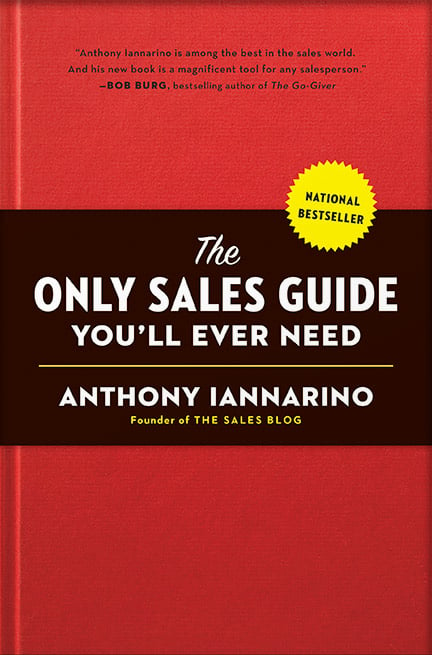The Gist:
- Some so-called sales experts would have you believe the cold call should be eliminated: they are wrong.
- The criticisms of the cold call and the synchronous medium of the telephone have a lot of contradictories, especially when compared to supposed replacements.
- In the end, cold calling holds up against the scrutiny of other prospecting mediums, especially when the sales experts who would have you do otherwise don’t judge their own mediums by the same standards.
Many so-called sales experts believe that the cold call should be eliminated as a choice for scheduling a meeting with your dream clients. Both their complaints and their proposed replacements—typically email and LinkedIn—display incredibly poor thinking and a staggering display of inconsistency. Simply put they’re guilty of a performative contradiction, doing exactly what they tell you that you shouldn’t do.
It’s time that we take a look at the complaints and criticism of the cold call and the synchronous medium that is the telephone. We’ll then see how asynchronous mediums, the ones that they recommend as replacements, hold up to the same scrutiny.


Complaint Number One: No Permission
By definition, a cold call is not expected. You are very literally interrupting your prospective client without their permission. But you interrupt them because you believe that they’ll be able to improve their results by doing something different from what they are doing now.
Complaint Number Two: Not Targeted
I am certain I take more cold calls than you do. It’s a professional courtesy, as well as a way to keep up with what salespeople are taught and trained to say when asking for a meeting. There is no research better than field research, observing salespeople in their natural habitat.
From what I’ve seen and heard, there is little evidence of a lack of targeting. Very few B2B sales organizations are willing to use their sales force to call people who don’t buy or won’t benefit from what they sell. Human beings are expensive resources. That said, I am certain that some groups treat prospecting like a telemarketing company.
Complaint Number Three: Low Yield
Every time you see statistics about the efficacy of cold calling, you will see the reported yield represented as exactly two percent. That consistency should be a giant red flag that the statistics are bogus. But you can also confirm they’re not true is by asking the person who spouts off that number for details and measurement methodologies. Is it two percent that pick up the phone at all? Is it two percent that say yes to a meeting? Is it two percent that end up buying from the company?
Different people and different companies produce different results, based on a number of different factors. But for our purposes here, let’s assume that a small percentage of people who get a cold call agree to a meeting and some smaller percentage of those become clients. Why does that justify abandoning the tool altogether?
My defense of the cold call is here, so I won’t spill more ink repeating my arguments. Instead, let me issue a challenge, by applying these same ideas to email and LinkedIn, the two mediums most often recommended as cold call replacements.


Complaint One: No Permission
The fact that you have my email address does not give you any more permission to email me than having my phone number gives you permission to call. Email fails the very test that cold call critics would use to remove the cold call from your toolbox. In fact, some of us would rather get a cold call than wade through the avalanche of spam that pours into our inbox every day.
How does LinkedIn hold up under the same scrutiny, given that invites and InMails have been automated? The ability to InMail people doesn’t give you the permission to invade their LinkedIn messages. Both of these mediums fail the “permission” challenge.
Complaint Number Two: Not Targeted
It’s just embarrassing to recommend email and LinkedIn as replacements for a phone call because you believe that B2B sales organizations are dialing for dollars. It’s the ultimate in performative contradictions.
Unless you believe a list with email addresses is targeting, there is little evidence that there is any real targeting other than “let’s use email addresses ending in .com.” One of the reasons that companies use email is because it’s cheap—especially when it’s fully automated. If they had to pay $1.00 per email, your spam filters could take a long vacation. At $2.00 per email, you wouldn’t need spam filters at all.
Oh, LinkedIn. The automation that allows people to scrape contacts never ceases to generate “special” offers from people who are in my industry, including my direct competitors. Like email, LinkedIn targeting rarely gets beyond “has a pulse.”
Not only do both mediums fail the targeting complaint, but they make phone use seem laser-focused by comparison.
Complaint Number Three: Low Yield
We don’t have any reliable scientific data on the sales yields from email or InMail, so go with your own experience here.
In the last week, how many emails showed up in your inbox that were designed to sell you something, even if that something was a reply or a meeting? How many of those emails did you respond to, and how many senders were thrilled (and, no doubt, surprised) by your response?
In that same period, how many InMail pitches caused you to click the poor, lonely Calendly link to schedule a meeting with the sender? If the answer is a big fat goose egg, chances are the sender had a yield staggeringly close to zero.
Just like the cold call, some people put LinkedIn to good use, and some do well with email. On the whole, they are both low-yield because prospecting is generally low-yield (but high value) for B2B sales organizations.
Those who claim the moral high ground when it comes to sales techniques would do well to judge themselves by the same standards.
Do Good Work:
- Avoid listening to so-called sales experts who would have you scrap the cold call.
- Use cold calling for a more focused targeting, surpassing that of email or LinkedIn.
- Understand that prospecting is generally low-yield and work on enriching your cold calling techniques.

Essential Reading!
Get my first book: The Only Sale Guide You'll Ever Need
"The USA Today bestseller by the star sales speaker and author of The Sales Blog that reveals how all salespeople can attain huge sales success through strategies backed by extensive research and experience."
Buy Now










